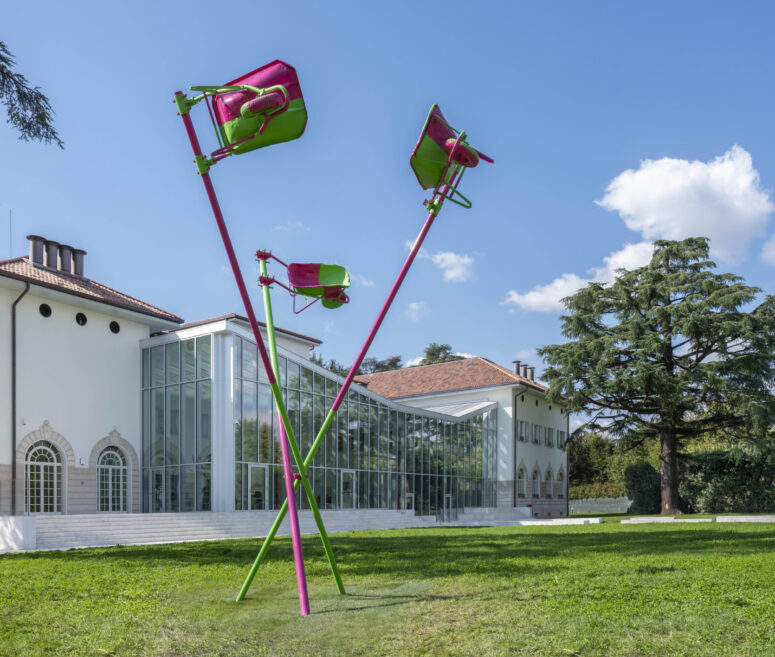The artist Abraham Cruzvillegas (Mexico City, 1968) presents a new site-specific intervention in the heart of the industrial area of Dalmine: a work conceived as a collective and relational gesture, created in collaboration with Fondazione Dalmine, the Municipality, and three local social cooperatives (Il Sogno, La Solidarietà, and Oasi Il Picchio Verde). The piece was realized using discarded materials and everyday objects sourced from the industrial context of TenarisDalmine and from the surrounding agricultural realities.
Installed in the park of Fondazione Dalmine, the sculpture is the culmination of a process that places value on participation, improvisation, the unforeseen, error, and instability as guiding tools for Cruzvillegas’s reflection. In continuity with his well-known practice of autoconstrucción — an approach inspired by the spontaneous, informal housing processes in the outskirts of Mexico City where he grew up — the artist has adapted his methodology to the specificity of this context. For its composition, he selected elements imbued with the cultural and territorial stratifications of the area, with references to Dalmine’s economic history, its natural landscapes, its flora and fauna, engineering, labor, and solidarity.
The ultra-matte green and hyper-glossy pink chosen to paint the three wheelbarrows perched atop steel tubes, like improvised flags, are colors that have recurred in Cruzvillegas’s work since 2004, when the artist visited the Mangueira samba school, located in the favela of the same name in Rio de Janeiro — a place deeply linked to Hélio Oiticica, who used to dance there and conceived his celebrated Parangolé. On that occasion — which Cruzvillegas describes as a true artistic pilgrimage — the adoption of this chromatic combination was born, as a tribute to the Mangueira community and Oiticica’s legacy.
By applying the two colors in a mirrored image — each covering half of the surface — the artist creates a horizontal contrast that bisects the sculpture’s elements, as though traversed by a visual “horizon line.”
As is often the case in Cruzvillegas’s practice, the work refuses a univocal meaning or didactic reading. Instead, it positions itself as an open device, capable of evoking different images depending on the gaze of the viewer. The wheelbarrows may be read as tools of agricultural labor or symbols of industrial toil; the steel poles may suggest industrial infrastructures or ritual totems. In any case, the work invites us to rethink our interpretive categories, to look at the territory with renewed eyes, to renegotiate the ambiguous and shifting notions of what we call “progress,” and to reflect on our relationship with both environment and history.
The title, An unstable and precarious self-portrait munching some traditional Fritos, sipping a couple of caballitos of Casa Dragones, after a busy journey with some dear friends, listening at the same time to the “Clair de lune,” performed by Menahem Pressler, and “Folie à Deux,” by Stefani Joanne Angelina Germanotta, does not define the work but, like the assemblage of seemingly dissonant elements that configure the sculpture, alludes to the mixture of individual and collective experiences, personal memories and global cultural references, coexisting without hierarchy in an open and polysemic composition.
On the opening day, musician and performer Dudù Kouate activated the sculpture through sound, together with several wheelbarrows used in the daily work of the Cooperatives involved in the project. The performance — born of a dialogue between Kouate and Cruzvillegas — narrates the creative process and the sculpture through sound and music.





